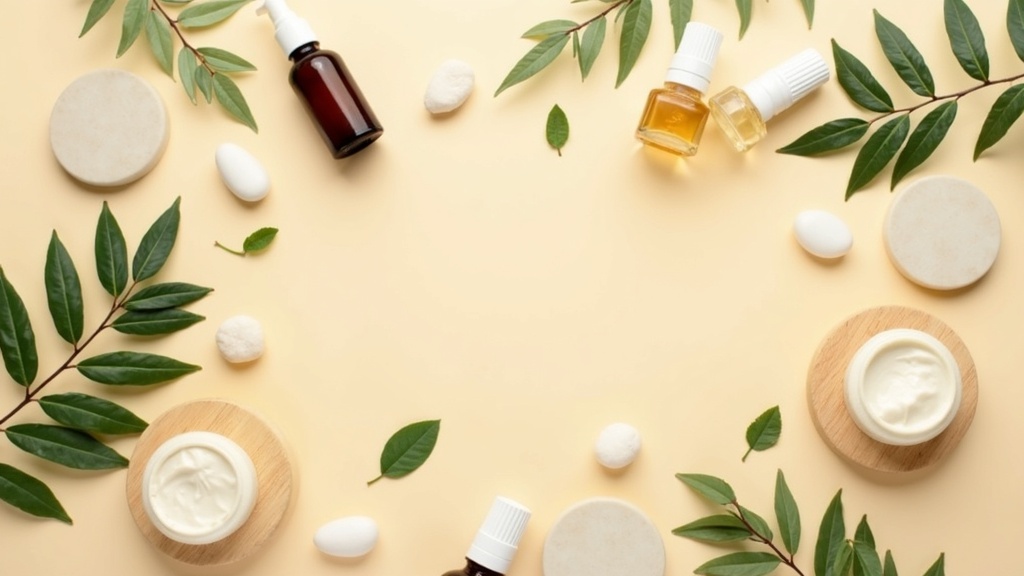Non-toxic skincare has become a serious game-changer in the beauty world, but figuring out what actually counts as “non-toxic” can get a bit confusing. Between clever marketing and complicated ingredient lists, I’ve found that picking truly safe products is more about reading labels and trusting your instincts than falling for buzzwords. I’ll break down what “non-toxic” really means, what to look for, what to avoid, and how to find products that actually work for your skin while keeping it as clean and healthy as possible.

Understanding Non-Toxic Skincare
Non-toxic skincare is about choosing products that don’t contain ingredients linked to health or environmental risks. There’s no universal legal definition of “non-toxic,” but most folks (myself included) use the term for products made without harsh chemicals, known irritants, or substances that are controversial due to studies linking them to things like allergies, hormone disruption, or other side effects.
Demand for safer formulas has shot up in recent years, partly due to shoppers becoming more ingredient-savvy. More brands are responding with cleaner labels and transparency about where they source their ingredients. Still, it helps to remember that “natural” or “organic” doesn’t always mean non-toxic, and not every synthetic ingredient is unsafe. Understanding these distinctions helps you make better decisions for your routine and your health.
How to Read Skincare Ingredient Lists
Getting familiar with skincare labels can save you a ton of frustration. The first few ingredients listed usually make up the majority of a product’s content. If you see a suspicious ingredient at the top of the list, it’s a good sign the product might not be as safe as it claims. Reading ingredient lists gets easier the more you practice, and over time, you’ll start to spot unwanted ingredients faster.
A handy tip I always use: If you can’t pronounce an ingredient, look it up (don’t just write it off as bad or good). There are free online databases like the Environmental Working Group’s Skin Deep Database that break down what an ingredient does and rate its safety. It can also help to double-check claims using other sites, helping you cut through marketing noise.
- INCI Name: Stands for International Nomenclature of Cosmetic Ingredients, the global standard for listing what’s inside a product.
- Fragrance/Parfum: A red flag for hidden chemicals. If a label just says “fragrance,” there may be other unlisted ingredients hiding behind it.
- Banned or Restricted Ingredients: Some countries ban certain chemicals in skincare, but rules aren’t the same everywhere. Products sold in the US, for example, might have things that are not allowed in the EU. Always double-check if you’re shopping internationally.
Common Ingredients to Avoid
Not every chemical is evil, but there are some that plenty of experts, clean beauty advocates, and regulatory bodies keep on their “avoid” list based on current research. Here are a few that show up a lot in mainstream skincare:
- Parabens: Synthetic preservatives sometimes linked with hormone disruption. Watch for names ending in paraben (like methylparaben, butylparaben).
- Phthalates: Often used in fragrances to help them stick, but flagged for possible hormone disruption.
- Sulfates: Mostly in foaming cleansers, think sodium lauryl sulfate (SLS) and sodium laureth sulfate (SLES), which can strip natural oils and irritate sensitive skin.
- Formaldehyde & Formaldehyde releasing Preservatives: Used to prolong shelf life but can be irritating or even toxic in larger amounts.
- Triclosan: An antimicrobial agent that’s being phased out in a lot of countries for health and environmental concerns.
- Artificial Fragrances and Dyes: No skin benefits; can trigger allergies or sensitivities, especially in delicate skin types.
How to Choose Non-Toxic Skincare Products
Sticking to non-toxic skincare gets easier once you know what you’re looking for. Here are a few steps that help me make smart picks:
- Choose Short Ingredient Lists: Less is often more, especially if you have sensitive skin or allergies. Fewer ingredients usually means fewer chances for irritation or unwanted reactions.
- Look for Certified Labels: Credentials like “EWG Verified,” “USDA Organic,” or “COSMOS Organic” show a product has passed extra safety or transparency checks. These don’t always guarantee perfection, but they add a layer of trust, giving you more confidence in what you’re buying.
- Prioritize Transparent Brands: If a brand shares full ingredient lists, explains what each ingredient does, and is open about sourcing, that goes a long way. Transparency builds trust and helps you make more thoughtful decisions.
- Patch Test: Before putting anything all over your face, try it on a small, discreet area of your skin for a few days. Even “clean” products can trigger reactions in sensitive skin.
- Pay Attention to Packaging: Some companies use sustainable or recyclable materials to cut down on environmental impact, which fits well with the non-toxic philosophy. Ecofriendly packaging also helps lower your personal waste and is good for the planet.
As you learn your skin’s needs and adjust your habits, you’ll find the process gets smoother. Support from customer reviews and social platforms can also help you find brands that are up front about their sourcing and manufacturing practices. By making educated swaps, your routine can become both safer for your skin and better for the environment over time.
Challenges and Common Pitfalls
There’s a lot of noise and not much regulation in the world of clean beauty, so it helps to be picky. Watch out for common pitfalls like:
- Greenwashing: Brands using words like “natural,” “organic,” or “clean” without backup. If they can’t show certifications or detailed ingredient sourcing, it might just be a marketing ploy.
- Overpromising: Some companies claim that natural equals hypoallergenic or more gentle, but some natural extracts (like certain essential oils or plant acids) can cause irritation, too.
- DIY Dangers: Making skincare at home can be fun, but not every online recipe is safe for all skin types. Small errors in measurement or the wrong combo of ingredients can throw off your skin’s balance and even cause irritation.
Keeping Costs in Check
Non-toxic doesn’t always mean paying high end prices, but some brands do mark up their products using clean claims. I’ve gotten great results from affordable drugstore lines focused on transparency and short ingredient lists. Doubling up on products isn’t always necessary; sometimes, a gentle cleanser and a simple facial oil go a long way. Saving money is possible if you carefully research and stick with multiuse essentials rather than splurging on the latest trends.
Finding What Works for You
No two skin types are the same. Some folks react to natural ingredients, while others tolerate mild synthetics just fine. My routine involves a patchwork approach, gently swapping out products over time, seeing what makes my skin happiest, and not stressing over perfection. Sometimes, it means mixing clean beauty products from different brands and even sticking to conventional products if they’re safe for sensitive skin, like basic petroleum jelly for a stubborn dry patch. It’s important to listen to your skin and figure out what truly makes a difference, rather than getting caught up in labels alone.
Benefits of Sticking with Non-Toxic Skincare
Choosing non-toxic skincare brings benefits for both skin health and peace of mind. Many people notice fewer breakouts, less redness, and improved hydration when swapping out harsh products. Plus, it feels good supporting brands that care about safety, quality, and sustainability. The benefits go beyond just beauty results and tie into more mindful, health-conscious living.
- Improved Skin Comfort: Less irritation and sensitivity over time, which leads to a happier complexion and improved confidence.
- Environmental Impact: Fewer toxic ingredients heading into waterways or building up in ecosystems, helping to protect our planet for the future.
- Supporting Transparency: Your money goes to companies that value your health and are open about what’s inside their bottles, showing a commitment to honest business practices.
For many, the real perk of non-toxic skincare is the daily confidence that comes with knowing you’re making healthy, responsible choices for yourself and the world around you.
Frequently Asked Questions
Here are a few questions I see pop up a lot when people start thinking about switching to non-toxic skincare.
Question: Are all natural ingredients safe for my skin?
Answer: Not always. Some plant-based ingredients (like citrus oils or certain herbs) can trigger reactions, especially on sensitive skin. Always patch test and research new ingredients, even if they sound gentle. Taking your time and observing your skin’s responses is the best way to avoid unwanted surprises.
Question: What if I can’t afford to swap everything at once?
Answer: Start slow. Focus on the products you use most often or those that cover the largest areas (like cleansers or body lotion), and replace them one at a time. Even small steps can make a big impact over time, both for your health and your wallet.
Question: Are synthetics always bad?
Answer: Not really. Many lab-created ingredients are just as safe as their “natural” counterparts, and sometimes more gentle or stable. What matters most is a brand’s transparency and the clinical safety data behind each ingredient. If you have doubts, ask the brand directly—most reputable companies are happy to provide details about their formulas, building a better relationship with consumers like you.
Getting Started with Non-Toxic Skincare
Transitioning to non-toxic skincare doesn’t need to be complicated. I recommend starting with one or two essential products and switching them out gradually. Tracking how your skin feels as you adjust helps you make smarter choices each step of the way. For most of us, it’s about progress, not perfection. Staying up to date with personal research and listening to your own skin keeps everything simple and stress-free as you move toward a safer, healthier skincare routine. The beauty of this approach is that you get to care for your skin and your overall well-being, while making a positive impact on the world around you. So, whether you’re brand new or a seasoned label reader, keep staying sharp, ask questions, and put your skin’s health first every day.
